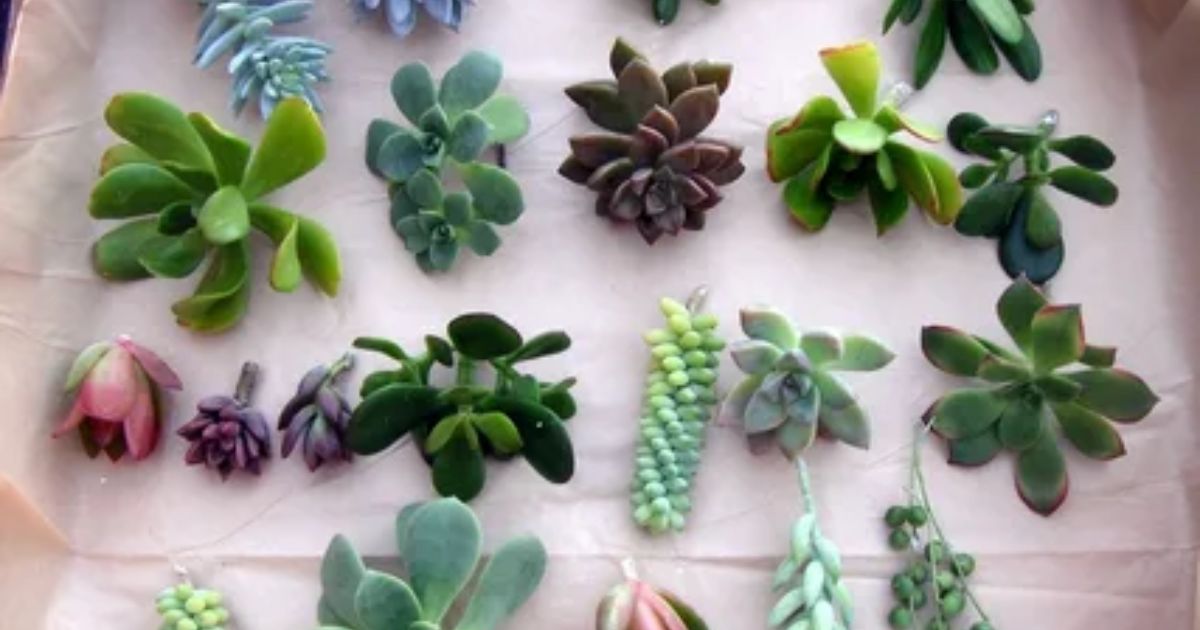In the world of gardening and culinary exploration, succulents have become increasingly popular due to their unique beauty and low-maintenance nature. However, beyond their aesthetic appeal, one might wonder if these ornamental plants have any edible qualities. In this article, we will delve into the topic of eating succulents and explore the various edible varieties, their nutritional value, and safety considerations. We will also uncover the culinary uses of succulents and provide helpful tips for growing your own edible succulent garden. Whether you are a seasoned chef looking to add a touch of novelty to your dishes or a passionate gardener seeking new horizons, this article aims to provide valuable insights for those who desire to belong to a community of succulent enthusiasts with a shared interest in both beauty and nourishment.
Key Takeaways
- Succulents offer unique and flavorful additions to culinary creations.
- Edible succulents are packed with essential vitamins and minerals.
- Some succulents may contain toxic compounds, so proper identification and preparation are crucial before consumption.
- Foraging wild succulents requires precautions and plant knowledge to avoid potential health risks.
Edible Succulent Varieties

Edible succulent varieties offer a unique and flavorful addition to culinary creations. These plants, known for their fleshy leaves and water-storing capabilities, come in a range of flavors that can tantalize the taste buds. From the tangy and tart leaves of purslane to the lemony zest of ice plants, edible succulents bring a burst of freshness and complexity to dishes.
In traditional cuisines, certain cultures have long recognized the culinary potential of these plants. For example, in Mexican cuisine, nopales, the pads of the prickly pear cactus, are commonly used in salads, soups, and even as a filling for tacos.
Similarly, in parts of Asia, the leaves of the jade plant are often pickled and used as a condiment. The incorporation of edible succulents in these traditional cuisines showcases their versatility and distinctive flavors.
Nutritional Value of Succulents
Succulents offer not only unique and flavorful culinary additions, but they also provide a notable nutritional value. These plants are packed with essential vitamins and minerals that can contribute to a well-balanced diet. Some common succulent varieties, such as aloe vera and purslane, are known for their health benefits.
Aloe vera, for instance, is rich in vitamins A, C, and E, as well as minerals like calcium and magnesium. Purslane, on the other hand, is a good source of omega-3 fatty acids and antioxidants. It is important to note that while succulents can be a nutritious addition to your meals, there are potential risks associated with consuming certain varieties.
Some succulents may contain toxic compounds, so it is crucial to properly identify and prepare them before consumption. As with any new food, it is advisable to consume succulents in moderation and consult a healthcare professional if you have any concerns.
| Nutrient | Aloe Vera | Purslane |
|---|---|---|
| Vitamin A | High | Moderate |
| Vitamin C | High | Moderate |
| Vitamin E | High | Low |
| Calcium | High | Moderate |
| Magnesium | High | Low |
| Omega-3 | Low | High |
| Antioxidants | Low | High |
| Toxicity Risk | Low | Low |
Safety Considerations When Eating Succulents

When considering the consumption of succulents, it is important to take into account the safety considerations involved. While many succulents are safe to eat and can even provide nutritional benefits, certain varieties can pose potential health risks if consumed. Some succulents contain toxic compounds that can cause gastrointestinal issues, skin irritations, or even more serious health problems.
Therefore, it is crucial to be aware of the specific succulent species you are planning to eat and ensure that they are safe for consumption. If you are foraging wild succulents for consumption, it is essential to take precautions. Make sure to properly identify the plants, as mistaking toxic varieties for edible ones can have severe consequences.
It is also advisable to wash the plants thoroughly before eating to remove any dirt or contaminants. By being cautious and informed, you can enjoy the benefits of succulent consumption while minimizing any potential risks.
Culinary Uses for Succulents
Succulents can be incorporated into a variety of culinary dishes. As culinary trends continue to evolve, chefs and home cooks are experimenting with unique recipes that feature these versatile plants. One popular way to use succulents in cooking is by incorporating them into salads.
Their vibrant colors and interesting textures add visual appeal to any dish. In addition, succulents can be pickled or fermented, adding a tangy and crunchy element to sandwiches or tacos. Another creative use is to infuse succulents into oils or vinegar.
Adding a subtle hint of flavor to dressings or marinades. When using succulents in cooking, it is important to select edible varieties and to ensure they have been properly washed and prepared. With their unique qualities, succulents offer endless possibilities for enhancing culinary creations.
Tips for Growing Edible Succulents
To successfully grow edible succulents, it is crucial to follow specific tips and guidelines. Here are some key tips for growing succulents indoors:
- Choose the right container: Select a container with good drainage to prevent waterlogging, as succulents are prone to root rot.
- Provide adequate sunlight: Place your succulents in a location that receives bright, indirect sunlight for at least 6 hours a day.
- Use well-draining soil: Succulents require soil that allows excess water to drain quickly. A mix of potting soil, sand, and perlite works well.
- Water sparingly: Overwatering is a common mistake. Succulents prefer to be slightly dry between waterings, so let the soil dry out completely before watering again.
- Maintain proper humidity: Succulents thrive in low-humidity environments, so avoid placing them near humidifiers or misting them regularly.
Conclusion
In conclusion, several edible varieties of succulents can be incorporated into culinary dishes. While not commonly consumed, succulents offer a range of nutritional benefits, including high water content and certain vitamins and minerals. However, it is important to exercise caution when eating succulents as some varieties may be toxic or have a bitter taste. Overall, with proper research and precautions, succulents can add a unique and nutritious element to a variety of dishes.










